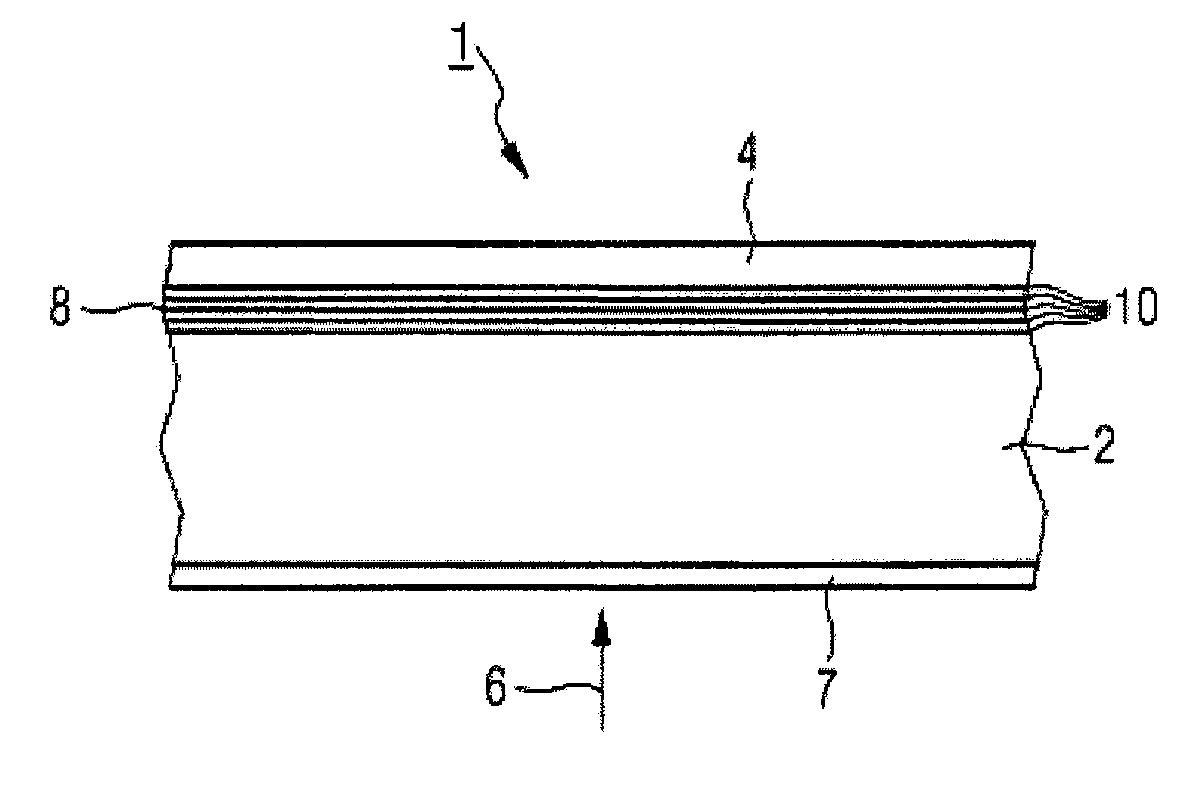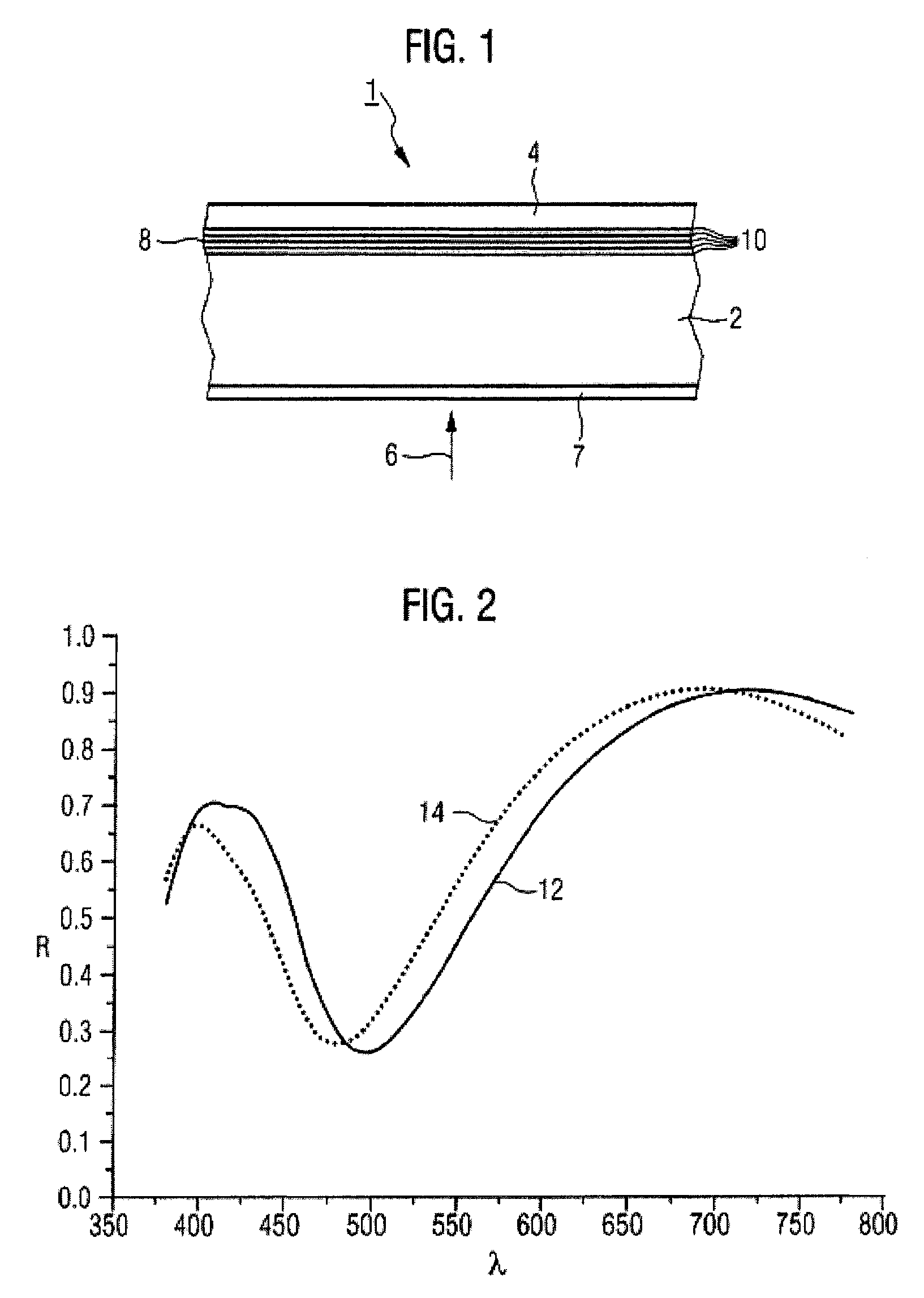Rearview mirror for motor vehicles
a technology for rearview mirrors and motor vehicles, applied in the direction of optical elements, instruments, transportation and packaging, etc., can solve the problems of driver blinding at night by the headlights of the cars behind him, the difficulty in ensuring the safety of drivers, so as to prevent blinding of drivers at night, the effect of special variable optical properties and reduced costs
- Summary
- Abstract
- Description
- Claims
- Application Information
AI Technical Summary
Benefits of technology
Problems solved by technology
Method used
Image
Examples
Embodiment Construction
[0033]The same parts are designated with the same reference numerals in all of the figures.
[0034]The rearview mirror 1 shown in a sectional view in FIG. 1 is intended for use in a motor vehicle. It comprises a layer substrate 2 that, in the embodiment, is transparent and made of soda-silicate glass. In order to ensure the reflective properties, a reflective mirror coating 4 made of a suitably selected metal or semiconductor material is provided. In the embodiment, silver (Ag) has been chosen for this purpose; however, as an alternative, another suitable reflective material could be employed such as especially aluminum, chromium, nickel, titanium or an alloy of these materials. In order to protect the reflective mirror coating 4 against damage or harm due to direct environmental effects, dirt and the like, the coating is applied onto the back, that is to say, on the side of the layer substrate 2 facing away from the viewing angle or direction of incidence of the light indicated by th...
PUM
| Property | Measurement | Unit |
|---|---|---|
| thickness | aaaaa | aaaaa |
| thickness | aaaaa | aaaaa |
| thickness | aaaaa | aaaaa |
Abstract
Description
Claims
Application Information
 Login to View More
Login to View More - R&D
- Intellectual Property
- Life Sciences
- Materials
- Tech Scout
- Unparalleled Data Quality
- Higher Quality Content
- 60% Fewer Hallucinations
Browse by: Latest US Patents, China's latest patents, Technical Efficacy Thesaurus, Application Domain, Technology Topic, Popular Technical Reports.
© 2025 PatSnap. All rights reserved.Legal|Privacy policy|Modern Slavery Act Transparency Statement|Sitemap|About US| Contact US: help@patsnap.com



